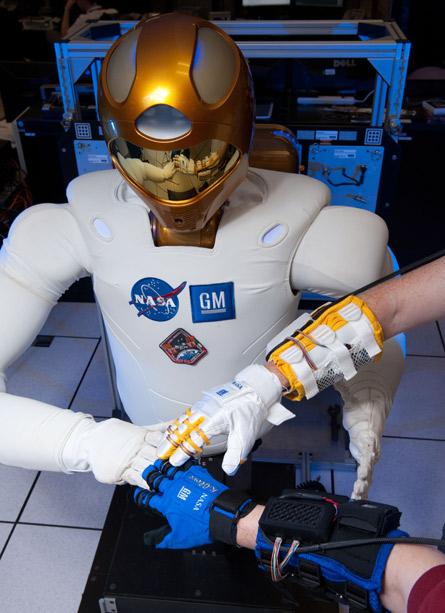Technology used to build a humanoid robot that is helping with chores aboard the International Space Station has helped engineers to develop a power-assisted glove prototype that might allow astronauts to double or treble their grip strength. A team from NASA and auto maker General Motors hope the prototype Robo-Glove will help astronauts or workers on the ground, in places such as car-assembly plants, to do their jobs better and cut the risk of repetitive stress injuries.
An astronaut working in a pressurized suit might need to use 15 to 20 pounds (70 to 90N) of force to hold a tool during an operation but with the robotic glove might need to apply only five to 10 pounds.
The glove was inspired by the finger-actuation system of the R2 robot (pictured, with the glove), which has been a permanent Space Station resident since 2011. Synthetic tendons embedded in the glove provide grasping support to human fingers when pressure sensors in the fingertips detect that the user is grasping a tool. The current prototypes weigh about 2 pounds and include control electronics and actuators; an off-the-shelf lithium-ion power-tool battery with a belt-clip is used to power the system.
 |
|---|
© NASA |
Source: Flight International






















